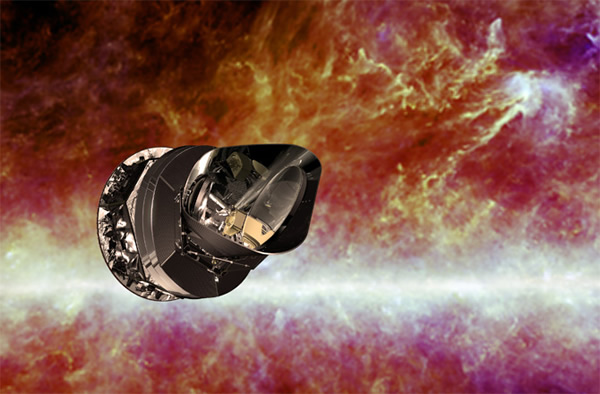Could a Space Telescope Help Us Grasp Reality?
An artist's rendering of the European Planck space observatory.
Launched in 2009 by the European Space Agency (ESA), the Planck space telescope has spent years soaking up radiation from the furthest most reaches of the universe. One of its major tasks has been to catalog the faint patterns in the endearing electromagnetic remnants of our universe’s infancy with unprecedented precision.
This information may push our observational investigations to within a fraction of a second of our universe’s birth. Unfortunately, the public release of these data isn't due for another few months -- an influential voice on one of mankind’s oldest conversations is locked in a European hard drive.
Unless you contemplate humanity’s greatest mysteries on a regular basis, let’s take a break from our daily routines and get a touch existential: how did reality get here?
Big Bang Reality
In a certain sense, one could end the conversation by saying reality is here today because it was here yesterday. This is the picture the laws of physics paint for us. But what if we asked what reality was doing 5 trillion days ago, that is, around the time of the Big Bang?
Without the new Planck data, humans have traced reality back 13.7 billion years using other precise observations of our wild cosmos – including data from the successful NASA Wilkinson Microwave Anisotropy Probe (WMAP). These investigations reveal a fascinating picture: the entire universe was once hot, dense and could have fit under your fingernail. This is the remarkably successful Big Bang theory. However, the conversation about the Beginning doesn’t quite end here. The household Big Bang model actually comes with its fair share of baggage.
Just as what reality is doing now depends on what reality was doing yesterday, what reality did 13.7 billion years ago set the stage for the subsequent evolution of our universe. The galaxies, the stars, the planets, and, perhaps most importantly, life depends on what this stage looked like.
While any candidate theory of our origins will, of course, have to predict a stage that allows the universe to grow into beings that can think about their origins, a scientifically satisfying stage would be one that did not require many unexplained facts. The success of science is driven by this dissatisfaction with the poorly explained. Without further qualification, the original Big Bang model predicts a very delicate arrangement of initial conditions -- a whole slew of scientifically unsatisfying, unexplained facts.
Feb 5, 2013 05:00 PM ET by David Marulli












